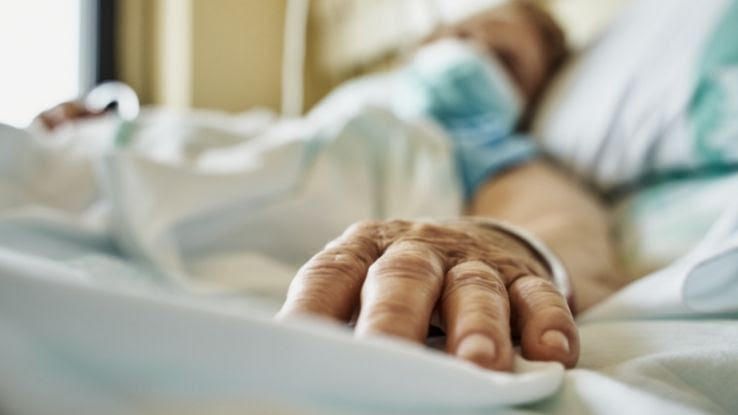Pacific Prime for Beginners
Pacific Prime for Beginners
Blog Article
The Basic Principles Of Pacific Prime
Table of ContentsThe 4-Minute Rule for Pacific PrimeNot known Factual Statements About Pacific Prime The Of Pacific PrimeLittle Known Facts About Pacific Prime.Excitement About Pacific Prime

This is because the information were accumulated for a duration of solid financial performance. Of the approximated 42 million people that were without insurance, all but regarding 420,000 (about 1 percent) were under 65 years old, the age at which most Americans become eligible for Medicare; 32 million were adults in between ages 18 and 65, about 19 percent of all adults in this age team; and 10 million were children under 18 years of age, about 13.9 percent of all kids (Mills, 2000).
These quotes of the variety of individuals uninsured are produced from the yearly March Supplement to the Existing Population Survey (CPS), performed by the Demographics Bureau. Unless otherwise noted, national price quotes of people without medical insurance and proportions of the populace with various sort of coverage are based on the CPS, the most extensively made use of resource of estimates of insurance policy protection and uninsurance rates.
Pacific Prime Fundamentals Explained

Still, the CPS is especially useful due to the fact that it generates annual estimates relatively quickly, reporting the previous year's insurance policy coverage approximates each September, and due to the fact that it is the basis for a constant set of price quotes for even more than 20 years, permitting evaluation of trends in insurance coverage gradually. For these factors, along with the substantial use of the CPS in various other studies of insurance policy protection that are presented in this record, we depend on CPS price quotes, with restrictions kept in mind.

The estimate of the variety of without insurance people broadens when a populace's insurance coverage status is tracked for numerous years. Over a three-year duration starting early in 1993, 72 million people, 29 percent of the U.S. https://disqus.com/by/disqus_tLNq8V4sBK/about/. population, were without insurance coverage for at least one month. Within a solitary year (1994 ), 53 million individuals experienced a minimum of a month without insurance coverage (Bennefield, 1998a)
6 out of every ten without insurance adults are themselves employed. Although working does improve the chance that a person and one's member of the family will have he has a good point insurance policy, it is not an assurance. Also participants of family members with 2 full time wage income earners have practically a one-in-ten opportunity of being uninsured (9.1 percent without insurance rate) (Hoffman and Pohl, 2000).
The Greatest Guide To Pacific Prime
New immigrants make up a significant percentage of people without medical insurance. One evaluation has actually attributed a significant part of the current growth in the size of the U.S. uninsured population to immigrants that arrived in the country between 1994 and 1998 (Camarota and Edwards, 2000). Recent immigrants (those who concerned the United States within the previous 4 years) do have a high rate of being without insurance (46 percent), but they and their kids represent simply 6 percent of those without insurance policy across the country (Holahan et al., 2001).
The partnership between health insurance and access to care is well established, as documented later on in this chapter. The relationship between wellness insurance coverage and health and wellness end results is neither straight nor simple, a considerable professional and health and wellness services study literature links wellness insurance protection to enhanced access to care, far better high quality, and boosted individual and populace health and wellness standing.
Levels of evaluation for checking out the results of uninsurance. It focuses especially on those without any health and wellness insurance policy for any type of size of time.
Some Known Incorrect Statements About Pacific Prime
The problems dealt with by the underinsured are in some aspects similar to those faced by the without insurance, although they are usually much less extreme. expat insurance. Uninsurance and underinsurance, however, involve definitely different plan concerns, and the methods for addressing them may differ. Throughout this research and the 5 reports to follow, the main emphasis gets on persons with no medical insurance and hence no aid in spending for healthcare past what is offered through charity and safeguard establishments
Medical insurance is a powerful variable impacting receipt of treatment due to the fact that both individuals and physicians react to the out-of-pocket cost of services - https://stieuys-rhuiets-scriank.yolasite.com/. Medical insurance, however, is neither essential neither enough to get to medical services. The independent and straight result of wellness insurance policy coverage on accessibility to health and wellness services is well established.
Others will get the healthcare they need also without health and wellness insurance policy, by paying for it expense or seeking it from providers that offer care totally free or at very subsidized prices. For still others, health and wellness insurance alone does not make sure invoice of care as a result of various other nonfinancial barriers, such as an absence of healthcare service providers in their neighborhood, limited accessibility to transport, illiteracy, or linguistic and cultural distinctions.
The Best Guide To Pacific Prime
Official study concerning without insurance populations in the United States dates to the late 1920s and early 1930s when the Committee on the Cost of Medical Treatment produced a series of reports about funding medical professional office brows through and hospitalizations. This issue became salient as the varieties of medically indigent climbed throughout the Great Depression.
Report this page